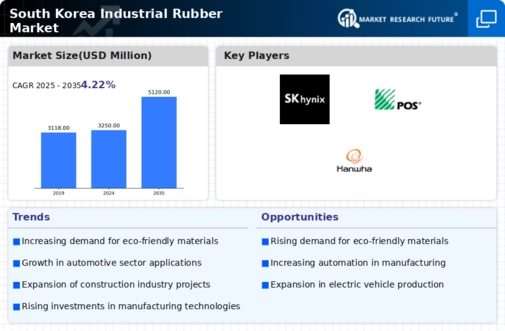The is characterized by a dynamic landscape that reflects the country's strong manufacturing capabilities and technological advancements. This market is an integral part of the broader automotive and industrial sectors, providing essential rubber products that meet various applications. With a blend of domestic players and international contenders, the competition in this industry is intense. Companies are constantly innovating, focusing on enhancing product quality, improving cost efficiency, and expanding their operational capacities to meet increasing demand in both local and export markets.
As sustainability becomes a crucial factor, firms are also investing in eco-friendly practices and materials to align with changing consumer preferences and regulatory requirements. Hankook Tire stands out in the with its robust presence and well-established brand reputation. The company is primarily recognized for its high-quality tires that cater to various segments, including passenger vehicles, commercial applications, and motorsports. Hankook Tire’s strengths lie in its commitment to research and development, which has enabled it to innovate continuously and maintain a competitive edge in tire technology.
It benefits from efficient manufacturing processes, local production facilities, and a dedicated workforce that emphasizes quality. The company also leverages its position in the automotive aftermarket through a wide distribution network, ensuring accessibility of its products across the country. This strategic focus has solidified Hankook Tire's importance as a key player in the market.Continental is another significant contender in the , known for its comprehensive range of rubber-based products and solutions tailored for various applications. The company specializes in producing tires for passenger and commercial vehicles, as well as components for automotive safety and efficiency.
With a strong emphasis on innovation, Continental is at the forefront of developing advanced tire technologies, including eco-friendly options that align with global sustainability trends. Its extensive market presence is supported by state-of-the-art manufacturing facilities and a solid supply chain network in South Korea. Strengths include a strong R&D focus, which drives new product development and improvements in performance and safety. Continental has also engaged in strategic partnerships and acquisitions to enhance its foothold in the region, ensuring its competitiveness in the vibrant South Korean industrial rubber market.














Leave a Comment